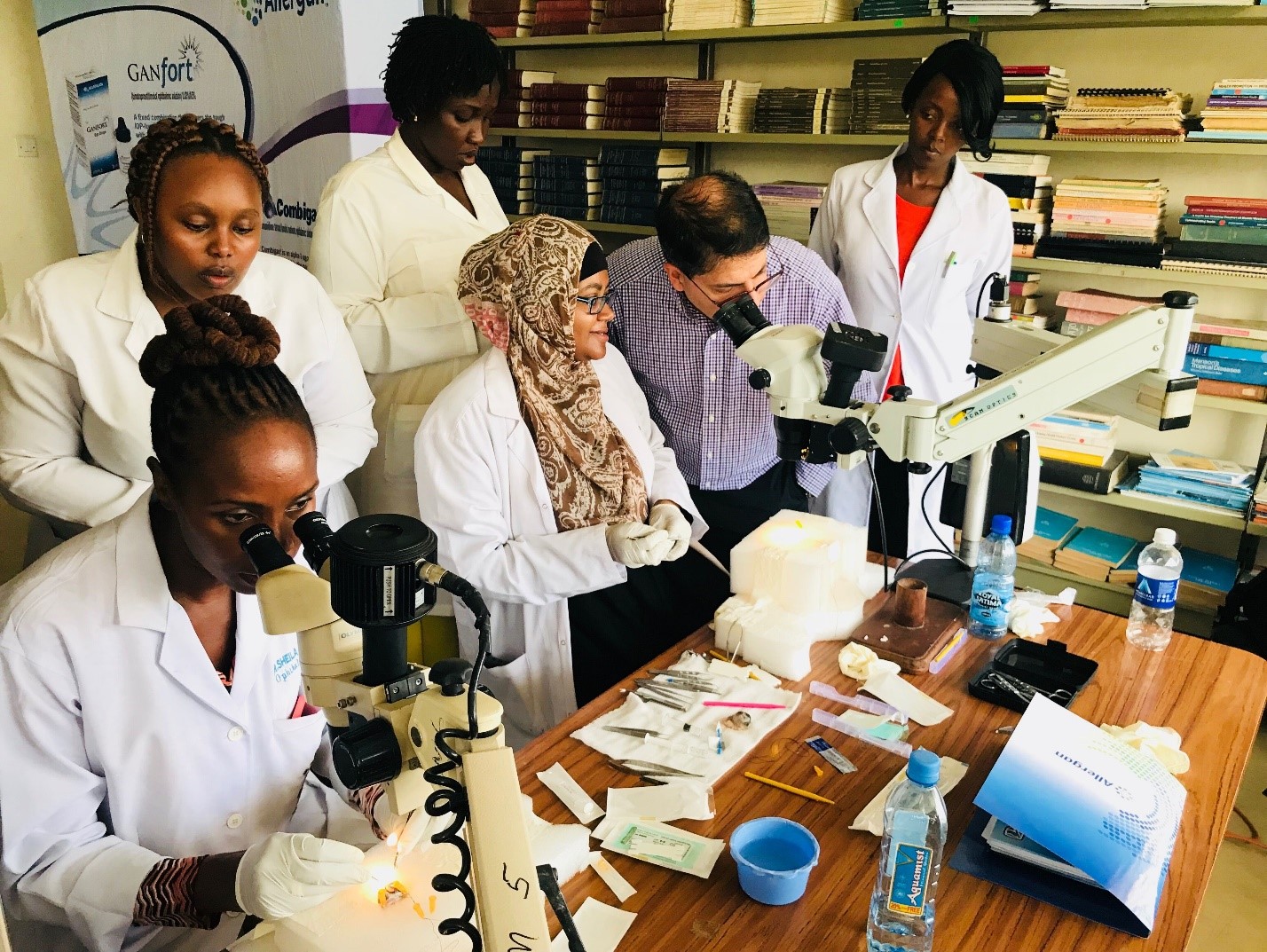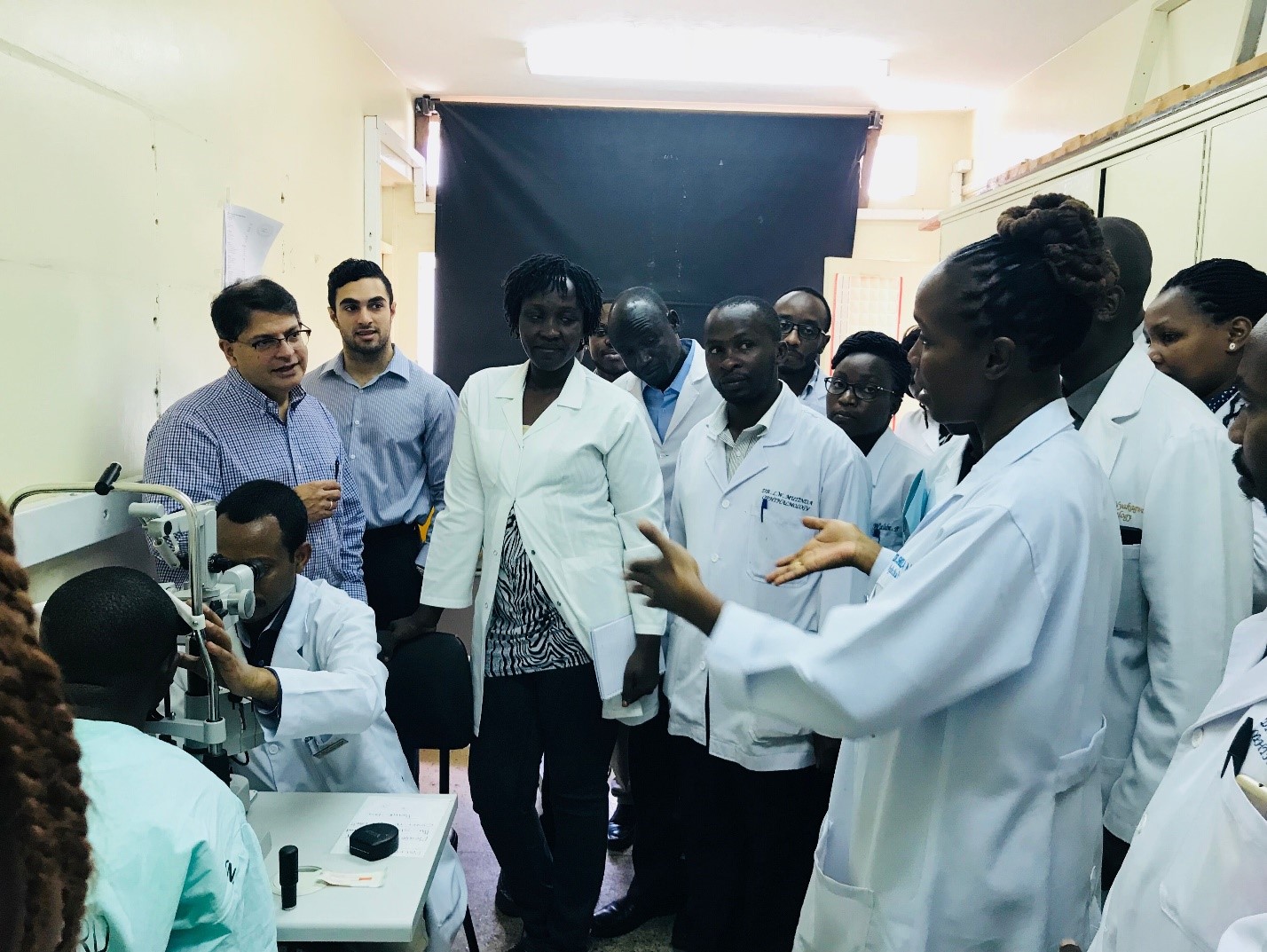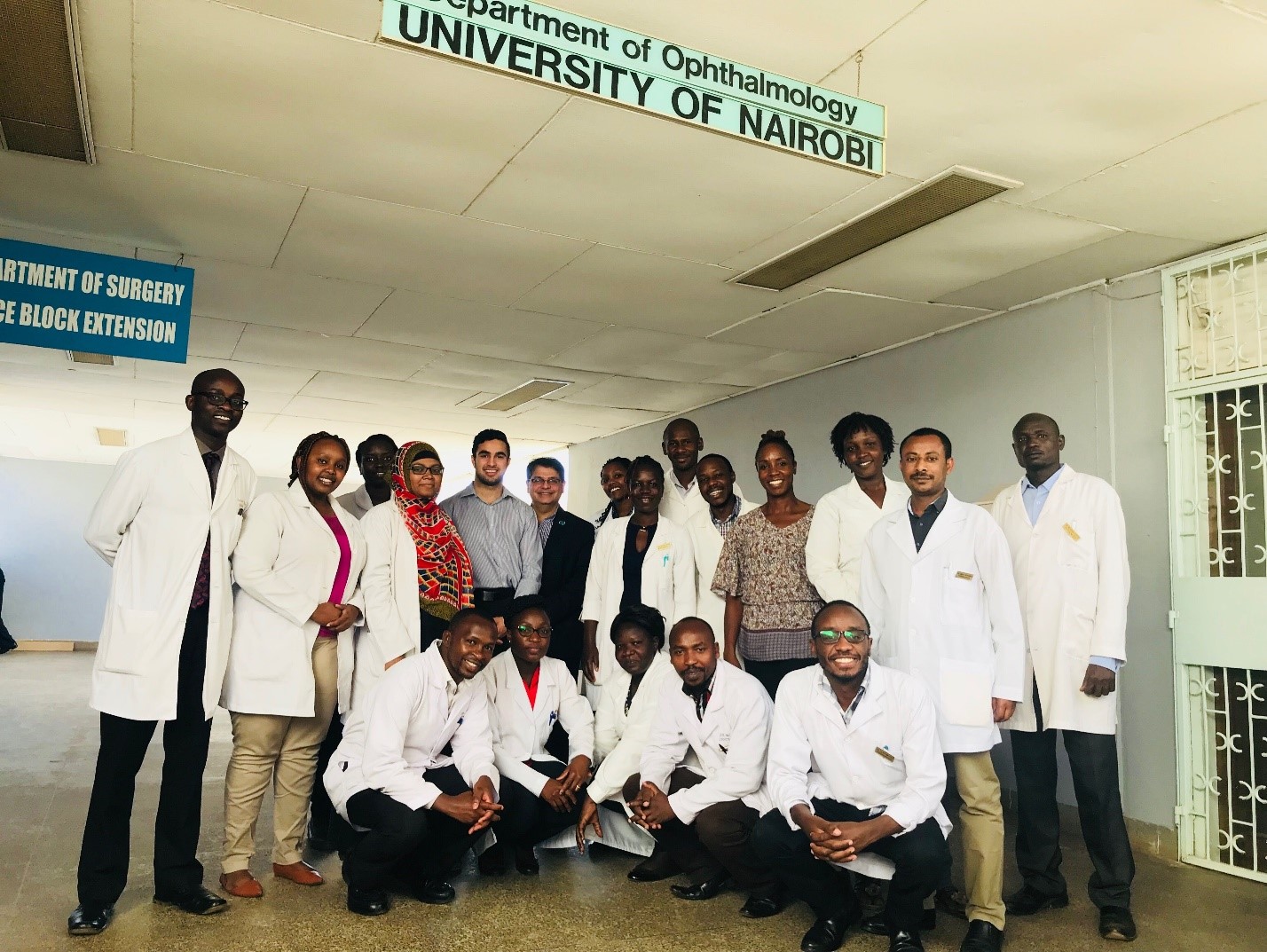Perspectives on Efforts Made to Improve Glaucoma Care in Nairobi, Kenya
The overall goal of this presentation was to introduce the STOP glaucoma initiative and to provide reflections from a visit to Kenya in 2018. It was presented at the University of Alberta’s 5th Annual Global Health Fair on February 4th, 2021. The presenter – Kahir Rahemtulla – is currently a 3rd year medical student at the U of A, with a B.A.Sc. in chemical engineering and a M.Sc. in medicine and biomedical engineering.
Kenya 2018
Reflections On Recent Trip To Kenya
(By Kahir Rahemtulla, M.Sc. in Medicine Candidate U of A)
<"col-" style="font-size: 13px; color: #131313;">Dr. Karim Damji, Dr. Sheila Marco, Kahir Rahemtulla and some of the senior ophthalmology residents at the University of Nairobi</"col-">
Growing up I had learned that global health work or any work to promote betterment in less fortunate communities, should be one of mutual benefit where both sides can learn from each other. My experience as a graduate student at the University of Alberta (UofA), accompanying Dr. Karim Damji - an ophthalmologist and glaucoma specialist also from the UofA - on one of his journeys to Sub-Saharan Africa (SSA) to promote better glaucoma care, was no exception.
Our journey would take us almost 14,000 km from the City of Champions to Kenya's capital, Nairobi. Dr. Damji - perhaps a "champion" in his own right - has undertaken many ventures in the past to ultimately prevent blindness deriving from glaucoma in SSA. Indeed, a non-ideal situation exists in Kenya where the number of people with glaucoma is estimated to be between 1-2M. Furthermore, Kenya has only two glaucoma specialists to serve this population. Therefore, Dr. Damji and his fellow collaborators have noticed a profound need to train and empower local individuals to self-propagate their knowledge to broaden the scope of these efforts (see STOP Glaucoma in Sub Saharan Africa by Damji et. al 2017, https://www.ualberta.ca/ophthalmology/about-the-department/international-ophthalmology/stop-glaucoma).
In this trip, we spent most of our time at the University of Nairobi (UofN) to better understand the current efforts being made to educate ophthalmology residents and to provide recommendations based on learnings from best practices. Much of our time was spent with the residents: listening to their presentations in lecture halls, learning the technique of trabeculectomy in wet labs and teaching and observing them in perioperative settings. Unlike the small cohort of approximately 12 ophthalmology students at the UofA spread across a five-year program, the UofN houses approximately 40 students across a three-year program. Intuitively, this presents unique challenges in accompanying students with adequate human and material resources.

Learning the surgical technique of trabeculectomy in a wet lab
However, the large numbers provided me with many opportunities to converse with the residents to better understand what motivates them and what they enjoy about ophthalmology. Many of the residents came from all over Africa: from Sudan, to Botswana, to Ghana, to even Sierra Leone on the west coast. During our hectic days, we sometimes stumbled upon tea breaks that were much needed due to our weariness. Here I would learn about some of their stories. I found out that many of them were authorized to return to their home communities, as they were compensated under a contract to become educated by their native governments. However, after further conversation, I often found that they wanted to return to their native communities on their own accord; they expressed a desire to bridge a gap of knowledge in eye-care in their home communities. Indeed, one gentleman from Sudan comes to mind that manifested this sentiment. When I asked him why he wanted to become an ophthalmologist, he exclaimed that he didn't, or that he didn't intend to initially. He was good with his hands and therefore wanted to practice general surgery. However, he noticed a void in his country's eye-disease care and saw an opportunity to intervene. To me this paradigm of decision-making was quite extraordinary; I was able to empathize with the compassion this gentleman must have had to give up something that he profoundly aspired to do, to perform other duties such that his people can benefit in the greatest capacity.
The residents were very bright and very pleasant to speak to. However, the most interesting character that we met on the trip had to be Dr. Sheila Marco. If I could describe her in brevity, it would be that she is one of the funniest, nicest, yet strictest persons I have ever met. This oxymoronic characterization derives from her simultaneous motivations of having a desire to help treat glaucoma while demanding the utmost excellence from her students. During her training, Dr. Marco had completed a fellowship with the UofA to obtain better expertise in glaucoma. She participated in what has been referred to as the "sandwich-model," where the program was conducted in both Alberta and in Kenya, to build individual and institutional capacity in a "layered" experience (more information regarding the sandwich-model and her experiences will be published from an individual interview between myself and Dr. Marco). After spending some time getting to know her and watch her work - despite my limited knowledge in the area - I can attest that she is excellent at what she does. Whether it be her hands in theatre, her attention for detail with patients or with her students, or her determination and resilience to make a difference in her community, I was profoundly inspired by her efforts. However, I would take this a step further and suggest that she epitomizes the potential that exists in many of these individuals who, if given the right guidance and resources, can excel and disseminate their knowledge to the minds of many other learners. Therefore, I believe she provides a personal account of justification for the many efforts that people like Dr. Damji are taking on to support these communities. After all, who do you think mentored Dr. Marco? It was a small team of ophthalmologists at the University of Alberta including Dr. Damji, Dr. Marianne Edwards, Dr. Michael Dorey and Dr. Ordan Lehmann.

<"col-">Dr. Sheila Marco providing insight to the residents during post-operative patient visits</"col-">
Having been able to share best practices with these communities while obtaining a better understanding of the many perspectives of ophthalmologists at the UofN, showed how this experience was indeed a mutual benefiting experience as I had first prophesied. I was very grateful and humbled to be a part of this experience and if there is one thing I will take away from it, it would be the altruistic and positive mindset that many of these individuals had even in the face of some of the challenges facing their home communities; they were empowered to become beacons of hope in eye-care and knew this would bring them much personal fulfillment.
There is still much work needed to eradicate glaucoma induced blindness in less fortunate areas. However, with efforts like these - slowly, slowly, or pole, pole in Swahili - we are getting closer.
